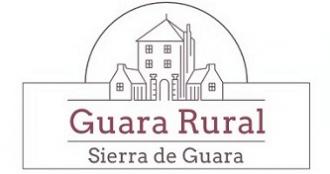GUARA RURAL SIERRA DE GUARA
OUR HISTORY
At the foot of the slopes of the southern point of the Sierra de Arangol, at 668 meters above sea level, under the crests of Guara, Vallemona and Tozal de Cubilas and near the confluence of the Barranco de la Tos with the Formiga river, GUARA RURAL (Bastáras ) today offers its farmhouse, its unique and steep street, its houses of traditional construction in stone.
From its past are the hidden ruins of the castle between the vegetation that invades the tozalón of the Cotón Strip or the hill of Marmañana, next to the old road that goes to Labata, against whose Muslim defenders it had to rise, in the years of 1060, this lonely fortress, which once the Villa was conquered, must have lost all its purpose; it consisted, as shown, of a rectangular tower and a walled enclosure with a cistern. In 1097, Pedro, bishop of Huesca, donated the church of Bastáras to the Monastery of San Ponce de Tomeras, together with those of Labatella, Morrano, Eso and Panzano; later this temple happened to San Pedro the Old one and later to the Order of Hospital or of San Juan de Jerusalén. According to Pascual Madoz, in 1850, Bastáras had two lathes or oil mills and a fountain, with whose waters the neighbors used to drink and irrigate some small gardens; meeting at 1/4 of an hour "with his big cover and three entrances; the rocks in which it concludes its depth present the form of an ox and call it with this name; They also offer an admirable view of the diversity of figures they naturally have; the same is observed in the so-called hole of Solencio of an incalculable extension, whose concavities are filled with water that they give off, with a great crash, for 20 or 24 hours, and then they retreat producing in their recoil a murmur so great that It resembles the bellows of a bull. The land is broken and of medium quality, it has abundant firewood and some grass weeds; the Hormiga river runs through it, which forms in a place called Bastarás's fountains and comes from the Solencio hole. "
There is in the vicinity of GUARA RURAL (Bastáras) a mythical and legendary world, of enormous chasms that contain countless underground beauties: Solencio, the Grallera, -this 277 meters in absolute vertical-, which form a set of deep abysses, of dark galleries, of narrow tunnels, of thick formations of stalagmites and stalactites, of hidden beauties formed by the water, of surprising and unknown corners, to which fantastic stories of witch covens are added.
There are two houses with interesting elements: one of the sixteenth century, with the Arms of the Bescós, with an entrance door under a pointed arch and a window framed by Gothic decoration, a sun-terrace and a cobbled patio with pebbles; another one with the Weapons of the Cabrero in the facade, with roof to four slopes and voluminous cylindrical chimney. At the top of the mountain is the ruinous Hermitage of the Virgen de la Sierra.
From its past are the hidden ruins of the castle between the vegetation that invades the tozalón of the Cotón Strip or the hill of Marmañana, next to the old road that goes to Labata, against whose Muslim defenders it had to rise, in the years of 1060, this lonely fortress, which once the Villa was conquered, must have lost all its purpose; it consisted, as shown, of a rectangular tower and a walled enclosure with a cistern. In 1097, Pedro, bishop of Huesca, donated the church of Bastáras to the Monastery of San Ponce de Tomeras, together with those of Labatella, Morrano, Eso and Panzano; later this temple happened to San Pedro the Old one and later to the Order of Hospital or of San Juan de Jerusalén. According to Pascual Madoz, in 1850, Bastáras had two lathes or oil mills and a fountain, with whose waters the neighbors used to drink and irrigate some small gardens; meeting at 1/4 of an hour "with his big cover and three entrances; the rocks in which it concludes its depth present the form of an ox and call it with this name; They also offer an admirable view of the diversity of figures they naturally have; the same is observed in the so-called hole of Solencio of an incalculable extension, whose concavities are filled with water that they give off, with a great crash, for 20 or 24 hours, and then they retreat producing in their recoil a murmur so great that It resembles the bellows of a bull. The land is broken and of medium quality, it has abundant firewood and some grass weeds; the Hormiga river runs through it, which forms in a place called Bastarás's fountains and comes from the Solencio hole. "
There is in the vicinity of GUARA RURAL (Bastáras) a mythical and legendary world, of enormous chasms that contain countless underground beauties: Solencio, the Grallera, -this 277 meters in absolute vertical-, which form a set of deep abysses, of dark galleries, of narrow tunnels, of thick formations of stalagmites and stalactites, of hidden beauties formed by the water, of surprising and unknown corners, to which fantastic stories of witch covens are added.
There are two houses with interesting elements: one of the sixteenth century, with the Arms of the Bescós, with an entrance door under a pointed arch and a window framed by Gothic decoration, a sun-terrace and a cobbled patio with pebbles; another one with the Weapons of the Cabrero in the facade, with roof to four slopes and voluminous cylindrical chimney. At the top of the mountain is the ruinous Hermitage of the Virgen de la Sierra.











